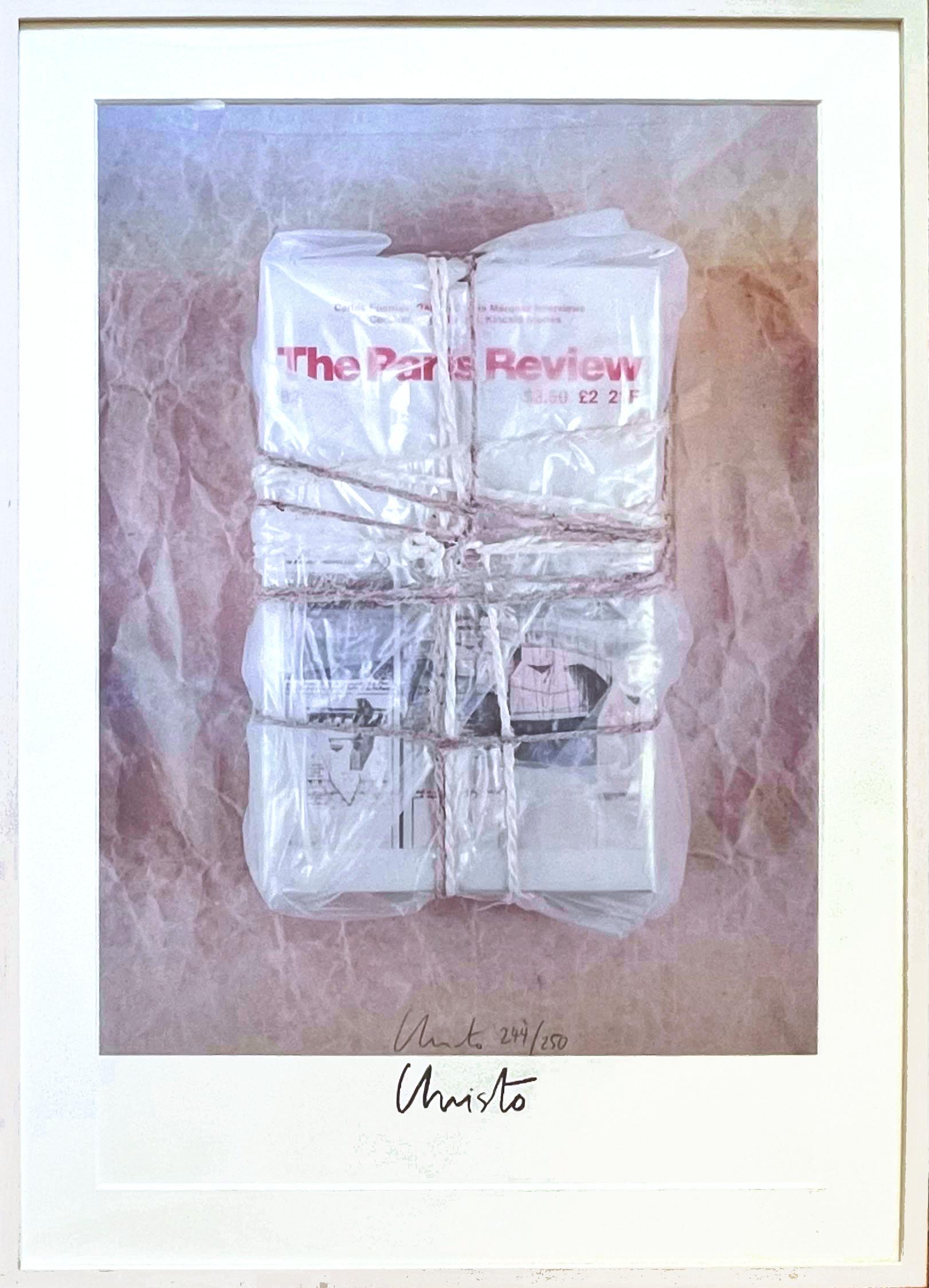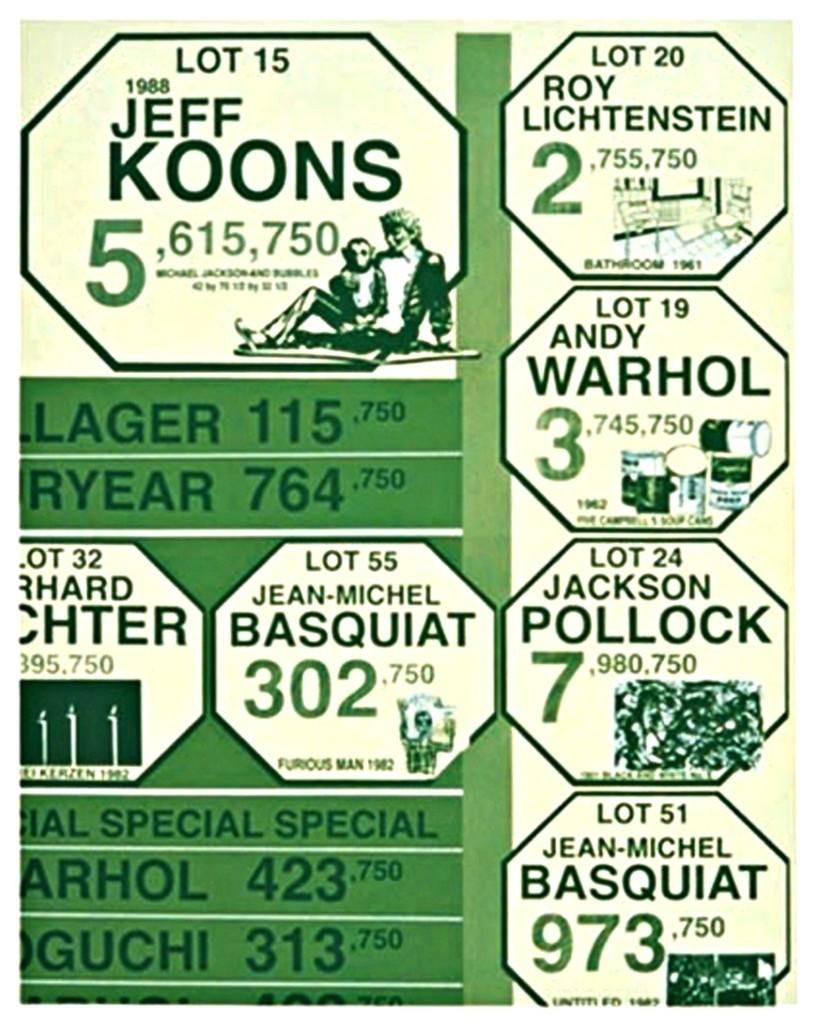Items Similar to Eddie (Sylvie's Brother) in the Desert (celebrated 1960s silkscreen) Signed/N
Want more images or videos?
Request additional images or videos from the seller
1 of 6
Oyvind FahlstromEddie (Sylvie's Brother) in the Desert (celebrated 1960s silkscreen) Signed/N 1966
1966
About the Item
Öyvind Fahlström
Eddie (Sylvie's Brother) in the Desert (from New York International Portfolio), 1966
Silkscreen on wove paper
Pencil signed and numbered from the limited edition of 225.
Unframed
In 1999, another edition of this work was included in the exhibition, Ö"yvind Fahlström: The Complete Graphics and Multiples" - a comprehensive survey of Öyvind Fahlström’s graphic work, including twenty-seven prints as well as multiple editions in three-dimensional object and book format.
This important 1960s silkscreen is by Brazilian-born Swedish Pop/Conceptual artist Oyvind Fahlstrom from the New York International Portfolio, Volume I, 1966. Fahlstrom's prints from the mid 1960s, like this one featuring a cutout image of Chairman Mao, are desirable and quite uncommon. A descendant of Surrealism, he actively incorporated chance into art. For his format and imagery, Fahlstrom borrowed heavily from popular culture sources, continuously drawing from his vast files of magazine photographs and comic books: "In the early 1960s Öyvind Fahlström began to make what he termed “variable” paintings, in which a figure’s limbs or other discrete shapes were segmented and jointed—and thus movable. The potential mobility of these elements was, for Fahlström, a way of implicating the viewer. In his words, “strategy, manipulation, [and] political psychodrama” are central to art’s content. Eddie (Sylvie’s Brother) in the Desert is crowded with vivid, active, yet enigmatic imagery—a window shattering, a flag fluttering, a nude woman running, a suited man bounding out of the frame, and cartoonish trails of rushing air. The title references Sylvie Vartan, a French pop singer of the day, and her brother, Eddie, a musician as well, for whom Fahlström imagined a densely populated, disorienting “desert.” "" - The Art Institute of Chicago
Other impressions of this print is in the collection of the Museum of Modern Art, the Art Institute of Chicago and major cultural institutions worldwide.
Publisher: Tanglewood Press, New York
Printer: M.H. Lavore Company
Documented in the online catalogue raisonne for the Oyvind Fahlstrom Estate Foundation
In 1999, another edition of this work was included in the exhibition, Ö"yvind Fahlström: The Complete Graphics and Multiples" - a comprehensive survey of Öyvind Fahlström’s graphic work, including twenty-seven prints as well as multiple editions in three-dimensional object and book format.
Öyvind Fahlström Biography from the exhibition:
Born in São Paolo, Brazil in 1938 of a Norwegian father and Swedish mother, Öyvind Fahlström led a peripatetic life that included years in Sweden, Italy, France, and New York. During the summer of 1939 he traveled to Sweden to visit his grandmother and was stranded by the outbreak of World War II. He attended school there until his parents returned to Stockholm in 1948. Fahlström received his degree in art history and archeology from the University of Stockholm in 1952. After receiving a grant from the Swedish-American Foundation he moved to New York in 1961, where he became immediately involved with a group of artists, including Robert Rauschenberg, Jasper Johns, and Robert Morris. Fahlström died in Stockholm in 1976.
Öyvind Fahlström was a visual artist, concrete poet, journalist, playwright, critic, filmmaker, and activist. Inspired by an eclectic range of sources, including the Surrealists, pre-Columbian manuscripts, modern Mexican art, John Cage, jazz, and underground comic artists like Crumb, Fahlström utilized diverse media, producing works in film, performance, installation, sculpture, prints, and painting. Though often classified as Pop because of his use of popular imagery, the political narratives in Fahlström’s work align him more with the ambitions of the Conceptual artists. A multi-media artist, Fahlström made use of many forms of distribution, including exhibitions, books, poetry, magazines, film, opera, television, and radio. He worked in the fields of painting, graphics, sculpture, film, comics, happenings, and radio theater. He mixed all of these areas as well as creating forms of his own.
Fahlström’s main interest was in the political implications of contemporary art. Fahlström believed in art as a force for changing consciousness and the world. His works are at once political fantasies and the result of meticulous research. He scrupulously followed economic and socio-political developments around the world, responding to ever-shifting global situations. Central to his work is a synthesis of psychodrama, truth of history, game theory, maps, puzzles, performance, and installations. His interests in language, journalism, and game-playing provided a foundation for artworks which typically invite viewer participation and incorporate variable possibilities for resolution. The works ’ visual and textual openness helps them to avoid a stern didacticism. They are poetic as well as critical.
Fahlström discussed his process in “Sausages and Tweezers – A Running Commentary” (1966):
“My basic interpretation of the concept of a game – and my artistic use of it – is not evolved from the strategy theories of von Neumann, Hermann Kahn, etc. I am more inclined to refer to Cage’s method of composition, and psychologists such as T. Leary and E. Berne. But above all, the idea of a game for me is a simple, fundamental out look on life, dating back to the time of my Concrete Manifesto (1953).”
Öyvind Fahlström was greatly under-recognized during his lifetime; however, critical interest in his work has recently exploded on the international and national scene, as demonstrated by the current retrospectives and catalogues in progress in Europe and his selection for inclusion in Documenta X, the world’s most prestigious art exposition (1997). Fahlström is viewed by many to be a progenitor of Pop Art, Installation Art and genres of political art. His work, critically received as avant·garde and socially responsible, has influenced generations of younger artists.
This exhibition traveled to six other educational institutions: the Haggerty Museum of Art (Marquette University), Selby Galleries (Ringling School of Art and Design), Gibson Art Galleries (State University of New York), The Mesaros Galleries (University of West Virginia), Herron Gallery (University of Indiana – Purdue), and Arizona State University Art Museum.
The exhibition was accompanied by 20-page, black-and-white and color catalog
- Creator:Oyvind Fahlstrom (1928 - 1976)
- Creation Year:1966
- Dimensions:Height: 17 in (43.18 cm)Width: 21 in (53.34 cm)
- Medium:
- Movement & Style:
- Period:
- Condition:
- Gallery Location:New York, NY
- Reference Number:1stDibs: LU1745213172072
About the Seller
5.0
Platinum Seller
These expertly vetted sellers are 1stDibs' most experienced sellers and are rated highest by our customers.
Established in 2007
1stDibs seller since 2022
299 sales on 1stDibs
Typical response time: 1 hour
- ShippingRetrieving quote...Ships From: New York, NY
- Return PolicyA return for this item may be initiated within 1 day of delivery.
More From This SellerView All
- May 15 2001, signed silkscreen cultural commentary famed African American artistBy Kerry James MarshallLocated in New York, NYKerry James Marshall May 15, 2001, 2003 Four color silkscreen on Arches 88 paper Pencil signed, dated and numbered 39/60 on the front. Bears printer's blind stamp Vintage frame incl...Category
Early 2000s Pop Art Figurative Prints
MaterialsScreen, Pencil, Graphite
- Santa Fe Opera (Deluxe VIP Edition; Hand Signed & Numbered AP Edition of 50)By Robert IndianaLocated in New York, NYROBERT INDIANA Santa Fe Opera (Hand signed, numbered), 1976 Silkscreen on wove paper 37 1/2 × 27 inches Edition AP 7/50 Hand Signed and dated lower rig...Category
1970s Pop Art Abstract Prints
MaterialsScreen, Pencil, Graphite
- Fun Vacation (200, Engberg) (Hand signed 13/16 by Ed Ruscha AND Kenny Scharf)Located in New York, NYEd Ruscha and Kenny Scharf Fun Vacation (200, Engberg), 1990 Lithograph in five colors on white Rives BFK paper (hand signed by BOTH Ed Ruscha and Kenny Scharf) 36 × 27 inches Hand-s...Category
1990s Pop Art Abstract Prints
MaterialsPencil, Graphite, Lithograph
- Femme de Peuple II (hand signed and inscribed to poet Robert Duncan)By R.B. KitajLocated in New York, NYR. B. Kitaj Femme de Peuple II (hand signed and inscribed to poet Robert Duncan), 1978 Offset Lithograph (hand signed and inscribed to poet Robert Duncan) Hand signed and inscribed o...Category
1970s Pop Art Figurative Prints
MaterialsGraphite, Offset, Lithograph
- Thou Shalt Have No Other Gods Before Me (The First Commandment)By Kenny ScharfLocated in New York, NYKenny Scharf Thou Shalt Have No Other Gods Before Me (The First Commandment), 1987 5-Color lithograph on Dieu Donne handmade paper with deckled edges 24 × 18 inches Hand signed, date...Category
1980s Pop Art Abstract Prints
MaterialsLithograph, Pencil, Graphite
- Wrapped Paris Review deluxe hand signed, numbered Lt Ed for literary publicationBy ChristoLocated in New York, NYChristo Wrapped Paris Review (Deluxe hand signed edition), 1982 Lithograph and offset lithograph Hand signed and numbered 244/250 by Christo on th...Category
1980s Pop Art Abstract Prints
MaterialsLithograph, Offset, Graphite, Pencil
You May Also Like
- Study of HandsBy Roy LichtensteinLocated in New York, NYCreated in 1981 as an original lithograph with screen-printing, Roy Lichtenstein’s, Study of Hands is hand-signed in pencil, dated and numbered, measuring 31 ¼ x 32 ¾ in. (79.5 x 83....Category
20th Century Pop Art Figurative Prints
MaterialsLithograph, Screen
- UntitledBy Keith HaringLocated in New York, NYCreated by Keith Haring in 1985 as an original screenprint in colors, Untitled, 1985 is hand-signed, dated and numbered in pencil, measuring 23 ½ x 31 ½ in. (60 x 80 cm), unframed, f...Category
20th Century Pop Art Abstract Prints
MaterialsScreen
- THE HARTLEY ELEGIES - KvF VIBy Robert IndianaLocated in Aventura, FLHand signed, dated and numbered by the artist. Screenprint on Saunders watercolor paper from the edition of 50. Artwork is in excellent condition. Certificate of authenticity inclu...Category
1990s Pop Art Figurative Prints
MaterialsPaper, Screen
- THE HARTLEY ELEGIES - KvF IIBy Robert IndianaLocated in Aventura, FLHand signed, dated and numbered by the artist. Screenprint on Saunders watercolor paper from the edition of 50. Artwork is in excellent condition. Certificate of authenticity inclu...Category
1990s Pop Art Figurative Prints
MaterialsPaper, Screen
- THE HARTLEY ELEGIES - KvF XBy Robert IndianaLocated in Aventura, FLHand signed, dated and numbered by the artist. Screenprint on Saunders watercolor paper from the edition of 50. Artwork is in excellent condition. Certificate of authenticity inclu...Category
1990s Pop Art Figurative Prints
MaterialsPaper, Screen
- THE HARTLEY ELEGIES - KvF IXBy Robert IndianaLocated in Aventura, FLHand signed, dated and numbered by the artist. Screenprint on Saunders watercolor paper from the edition of 50. Artwork is in excellent condition. Certificate of authenticity inclu...Category
1990s Pop Art Figurative Prints
MaterialsPaper, Screen
Recently Viewed
View AllMore Ways To Browse
Vintage In N Out Sign
Desert Vintage New York
Retro Map Prints
Comic Book Prints
World Exposition Book
Screen Brazil
Vintage American Flag Print
Vintage Window Screens
Vintage World Radio
Vintage Tv Screen
Man O War
Vintage State Maps
Retro Television Screen
Vintage Map Book
Vintage Maps New York
Vintage New York Maps
Vintage Map Of New York
Retro Radio Used





